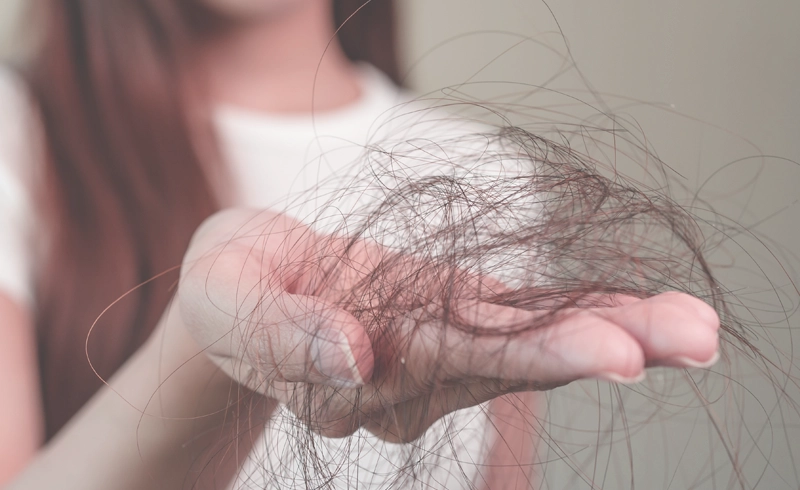Androgenetic Alopecia: Understanding Male and Female Pattern Hair Loss


Androgenetic alopecia, commonly known as male pattern baldness in men and female pattern hair loss in women, is a prevalent form of hair loss affecting millions of individuals worldwide. It is characterized by a distinct pattern of hair thinning and loss, and its causes and progression differ between the sexes.
Frequency and Risk Factors
In the United States, approximately 50 million men and 30 million women experience androgenetic alopecia. While it can start as early as the teenage years, the risk increases with age, with over 50 percent of men over 50 experiencing some degree of hair loss. For women, hair loss is more likely to occur after menopause.
Causes: Genetic and Hormonal Factors
The exact causes of androgenetic alopecia are not fully understood, but both genetic and hormonal factors are believed to play a significant role. Hormones called androgens, particularly dihydrotestosterone (DHT), have been associated with male pattern hair loss. In women, androgens also play a role, but other unknown factors are involved.
Androgens are important for normal sexual development in males and females, as well as regulating hair growth and sex drive. Hair growth begins under the skin in hair follicles, with each hair strand normally growing for 2 to 6 years before going into a resting phase and eventually falling out. Androgens influence this cycle, and excessive stimulation of hair follicles by androgens can lead to shorter growth periods and delayed replacement of shed hair, resulting in hair thinning or loss.
Genetic Factors
Research suggests that variations in the AR gene (Androgen Receptor gene) are involved in androgenetic alopecia. This gene provides instructions for making androgen receptors, which allow the body to respond to DHT and other androgens. Variations in the AR gene may lead to androgen receptors that are more easily stimulated, increasing their activity in hair follicles. However, the precise connection between these genetic changes and hair loss risk remains to be fully elucidated.
Associations with Medical Conditions
Androgenetic alopecia in men has been linked to several medical conditions, such as coronary heart disease and prostate enlargement. Additionally, conditions like prostate cancer, insulin resistance disorders (diabetes and obesity), and high blood pressure have shown associations with male pattern baldness. In women, this form of hair loss is associated with an increased risk of polycystic ovary syndrome (PCOS), a hormonal imbalance leading to various symptoms, including irregular menstruation, acne, excess body hair (hirsutism), and weight gain.
Researchers are investigating the relationship between androgenetic alopecia and other medical conditions, hypothesizing that elevated androgen levels may contribute to the occurrence of these disorders alongside androgen-related hair loss.
Treatment Options
While androgenetic alopecia is a genetic condition that cannot be fully cured, several treatment options can help manage hair loss and promote hair regrowth. These treatments include:
- Low-Level Light Therapy (LLLT): REVIAN RED’s dual wavelength technology releases nitric oxide and targets the three main pathogenic factors known to be associated with androgenetic alopecia: reduced blood flow, inflammation, and elevated levels of dihydrotestosterone (DHT)
- Medications: FDA-approved medications like minoxidil (Rogaine) and finasteride (Propecia) can slow hair loss and promote hair regrowth in some individuals.
- Hair Transplant Surgery: In severe cases, hair transplant procedures can redistribute healthy hair follicles to areas with thinning or balding hair.
- Lifestyle Changes: Adopting a healthy lifestyle, managing stress, and avoiding harsh hair treatments may help maintain hair health.
It is crucial to consult with a dermatologist or hair loss specialist to determine the most suitable treatment plan based on individual needs and conditions. To find a Revian Affiliate Physician, view our Physician Locator Map.
Androgenetic alopecia remains an important area of ongoing research as scientists continue to delve into its intricate genetic and hormonal factors. Understanding the complexities of this condition can lead to improved treatment options and a better quality of life for those affected by male and female pattern hair loss.
*Sources:
- Genetics Home Reference. (2021). Androgenetic alopecia. U.S. National Library of Medicine. https://ghr.nlm.nih.gov/condition/androgenetic-alopecia
- American Academy of Dermatology Association. (n.d.). Hair loss. https://www.aad.org/public/diseases/hair-loss*
